
Music nerds love ranked lists. Music nerds love thoughtful commentary. Music nerds love carefully curated playlists. Catalog Crawl provides all of these things and more. In these features, Strange Currencies takes an exhaustive look at the discographies of our favorite artists — the ones who reside at the core of our music obsession.
If my calculations are correct, there is no band less in need of an introduction to the readers of this site than R.E.M.: the Athens, Georgia quartet formed by Michael Stipe, Peter Buck, Mike Mills, and Bill Berry in 1980; and the band that would spend the next thirty-one years defining and redefining American alternative rock. In fact, while it wasn’t my precise intention in naming this site, I imagine that at least some of our traffic has been generated by searches for one of the band’s songs. Either way, as I’ve put it before, without R.E.M., there would be no Strange Currencies, in any name or form.
So then, why exert the time and effort into putting together a Catalog Crawl for such a familiar band? With the recent 40th anniversary of their epochal debut, Murmur, plenty of websites not named after R.E.M. songs have offered up their own rankings of the group’s catalog. I figured it was our turn — especially when, in my humble opinion, they’ve all been getting it wrong.
Few bands have ever meant so much to so many listeners, but R.E.M. fandom has always seemed to follow in one of a few different trajectories. To those that discovered the band during their opening five-album run on I.R.S. Records, that fandom — which really did feel like discovery — burned intensely, but often flamed out once the group graduated to Warner Bros. in 1988. To many of those listeners, something irreplaceable was lost in R.E.M.’s transition from an indie imprint to a major label.
But that transition exposed the band to an entirely new audience: one that I was a part of. The earliest memory that I have of R.E.M. was hearing about them from my older brother when I was around ten years old — their current album would have been Green. Within a year or two, even my mom was enough of a fan of “Losing My Religion” for our Mother’s Day gift of Out of Time to not feel like too much an act of self-service.
By the time of 1992’s Automatic for the People, I was a genuine fan. Over the next year or so, my brother and I would piece together the band’s entire back catalog on CD, and I would purchase each subsequent album — from Monster (1994) to Collapse into Now (2011) — on release day. Even if the band drifted toward the status of a ‘legacy act’ over that span — and at a more rapid pace after the departure of Berry in 1997 — they remained one of my inner circle favorites.
All of this context is to explain the fact that, while I hold the band’s I.R.S. era in the highest of esteem, I don’t feel that that five-album run is impermeable to intrusion from records beyond the indie years — and not just the usual suspect that is Automatic for the People. Most of the things that made R.E.M. great in the eighties remained intact during the nineties, and those that didn’t were replaced by equally impressive elements which couldn’t have come from a band of twenty-somethings: Stipe’s lyrics and vocals benefitted from the perspective that came with age and experience; Buck’s sonic architecture became more varied; Mills and Berry grew far beyond a mere rhythm section, offering more and more with each successive record.
Those records — five with I.R.S., five on Warner Bros. with the original lineup intact, and another five after Berry’s departure — combine to form one of the finest catalogs of any band. Ever. In fact, name an American rock group with a better discography. For the purposes of this piece, I have taken those fifteen albums, the band’s debut EP Chronic Town, and the 1987 odds-and-sods collection Dead Letter Office into consideration. Though R.E.M. also have three official live albums to their name, there’s already plenty to read through here.
As for the obligatory playlist, I’ve concocted a somewhat-convoluted (and totally arbitrary) set of conditions for eligibility. Any song that was released as a commercial (non-promo) single during the band’s 80s-90s heyday was ineligible for inclusion. Likewise, any track that was included on any of the band’s four official compilations — Eponymous (1988), In Time: The Best of R.E.M. (2003), And I Feel Fine… The Best of the I.R.S. Years (2006), and Part Lies Part Heart Part Truth Part Garbage (2011) — was off-limits as well. The intention was to pick songs that dig a bit deeper into this extraordinarily rich catalog, and for anyone left skeptical by the band’s better-known hits. You can find the playlist at the bottom of the article. Enjoy!
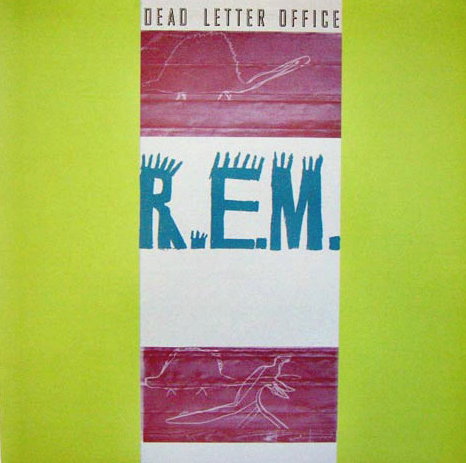
Dead Letter Office
1987
(6.5)
17
A couple of quick caveats: first, this is not a proper R.E.M. album, but rather a collection of B-sides and outtakes from their I.R.S. Records era; second, for many years, Dead Letter Office was the only way in which one could acquire the essential Chronic Town EP on CD, and for that alone, it was a pretty treasured artifact to a younger version of myself.
And that’s not to say that the LP version of Dead Letter Office — which subtracts the five Chronic Town tracks — is useless to any non-completist R.E.M. listener, though it really does come off as a “fans mostly” release. There are a few gems to be found, for sure. “Ages of You” is just a little bit of work away from being another one of the band’s jangle pop classics. “Burning Down” is only a slight step behind. And even some of the bad tracks provide entertainment value.
The thing is, even if you’re a super-fan, you’re probably not likely to reach for this one all that often.
One for the playlist: As a band composed of true music obsessives, it’s not surprising that R.E.M. frequently recorded cover songs. As a result, they were the first contact that I ever had with Wire (“Strange”), Richard & Linda Thompson (“Wall of Death”), and The Velvet Underground (three songs on Dead Letter Office). The highlight here is arguably their version of Pylon’s “Crazy”: recorded as a tribute to another one of Athens’ most renowned bands.

Around the Sun
2004
(6.6)
16
The shorthand version of R.E.M.’s thirteenth album is that it’s an affront to everything that they had built over the previous twenty years. I’m not going to try to redeem Around the Sun in this piece — I don’t think it quite deserves that, and I have better albums to stick up for here — but it’s not exactly the disaster that most fans have portrayed it as. The real issue with Around the Sun is that it just feels so… average. And this is a band that we had never been forced to accept average material from. Not only that, but the production here feels decidedly labored over, as if to compensate for a batch of songs that the band themselves didn’t fully believe in.
With that said, there are some solid moments here. It falls short of a true classic, but “Leaving New York” is a perfectly serviceable single. “Aftermath” is nice, though a little thin upon closer inspection. Same with “Electron Blue.” “The Ascent of Man” may have a divisive chorus, but I’ll give it a pass. And the closing title track confirms a momentum boost that arrives a bit too late, but is still appreciated.
However, there are an equal number of duds. I love R.E.M. and A Tribe Called Quest, but “The Outsiders” goes from ‘pretty decent’ to ‘awkward’ the second that Q-Tip shows up. I’m a bleeding heart liberal — thanks in part to this band — but the politically charged tracks here feel a bit stale and/or heavy handed. Most damningly, I know every second of Chronic Town through Reveal by heart, but a few of these songs, I can’t even recall by title alone — and it’s not for lack of giving them a genuine chance.
But it’s still an R.E.M. album, and there’s a chemistry that existed between these four three men that made even their most mundane material resonate. It’s just that more mundane material can be found here than on the previous twelve R.E.M. albums combined.
One for the playlist: As the lead single and obvious highlight, “Leaving New York” was an easy choice for inclusion on Part Lies. While there are a handful of worthwhile leftovers, “Aftermath” is just as easy a pick from the eligible remainders. Not only is it one of the less “fussed over” tracks from Around the Sun, but the appeal of its chorus hook makes it a clear standout from the band’s least-essential proper album.
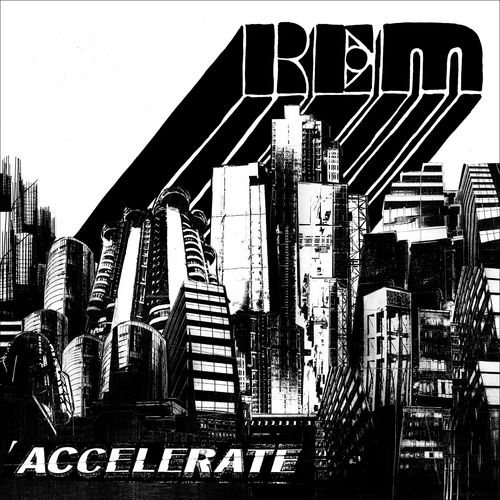
Accelerate
2008
(7.7)
15
What a difference a single spot makes on this list. Hailed as both a ‘back to basics’ approach and a significant return to form after Around the Sun, Accelerate does improve significantly on its predecessor, but it’s hardly the triumph that some fans and media outlets would have had you believe at the time of its spring 2008 arrival.
Buck, Mills, and Stipe certainly sound rejuvenated here, and the songwriting is much tighter than it had been on Around the Sun. However, Accelerate is a pretty front-loaded record, as it puts its best three tracks front-and-center. These include the spry opener, “Living Well Is the Best Revenge,” and the excellent first single, “Supernatural Superserious.” What follows is generally solid, even though it lacks the inspiration of the band’s best work.
Nevertheless, by the time of Accelerate, R.E.M. had already embarked on their ongoing 25th anniversary reissue campaign. The mere fact that they were still making music at all — let alone anything that sounded as energized as this — was plenty damned impressive.
One for the playlist: Of that strong opening trio, the only one eligible by my self-imposed parameters is “Man-Sized Wreath.” The star here is Mike Mills, whose backing vocals and wandering, McCartney-esque bass line steals the show from Stipe’s punkish lead.
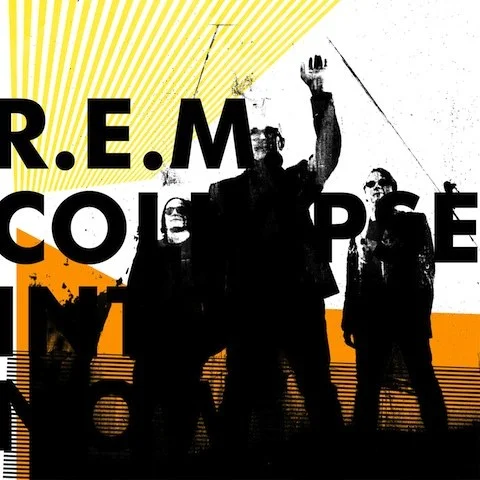
Collapse Into Now
2011
(7.7)
14
There’s not a lot to separate Accelerate from R.E.M.’s final album, Collapse Into Now; though with its slightly more eclectic track listing, Collapse is undoubtedly the more appropriate swan song for a band that was never content to stay in one place for too long, and also seemed allergic to retracing its own steps.
While Collapse was not announced as R.E.M.’s finale upon its release — the band officially broke up about six months later — it contained more than its share of breadcrumbs for observant listeners. Scattered throughout the album’s dozen tracks are multiple references to earlier points in the band’s discography, plenty of bittersweet introspection, and even Stipe’s waving hand on the record’s cover now reads as a revealing gesture.
And all things considered, Collapse Into Now found R.E.M. going out on a reasonably high note, especially for a band entering their fourth decade together. Accelerate may have the higher highs — though “Überlin” and “Walk It Back” are both excellent here — but, at least in my opinion, this is the slightly superior record front-to-back.
One for the playlist: Despite the fact that it was passed over as a single, there’s a stately quality to “Walk It Back” that makes it one of the most effective tracks on Collapse Into Now. Not only is it a highlight, but — given the chronological approach that I’ve taken in arranging the playlist — it makes for a perfectly appropriate closing song.
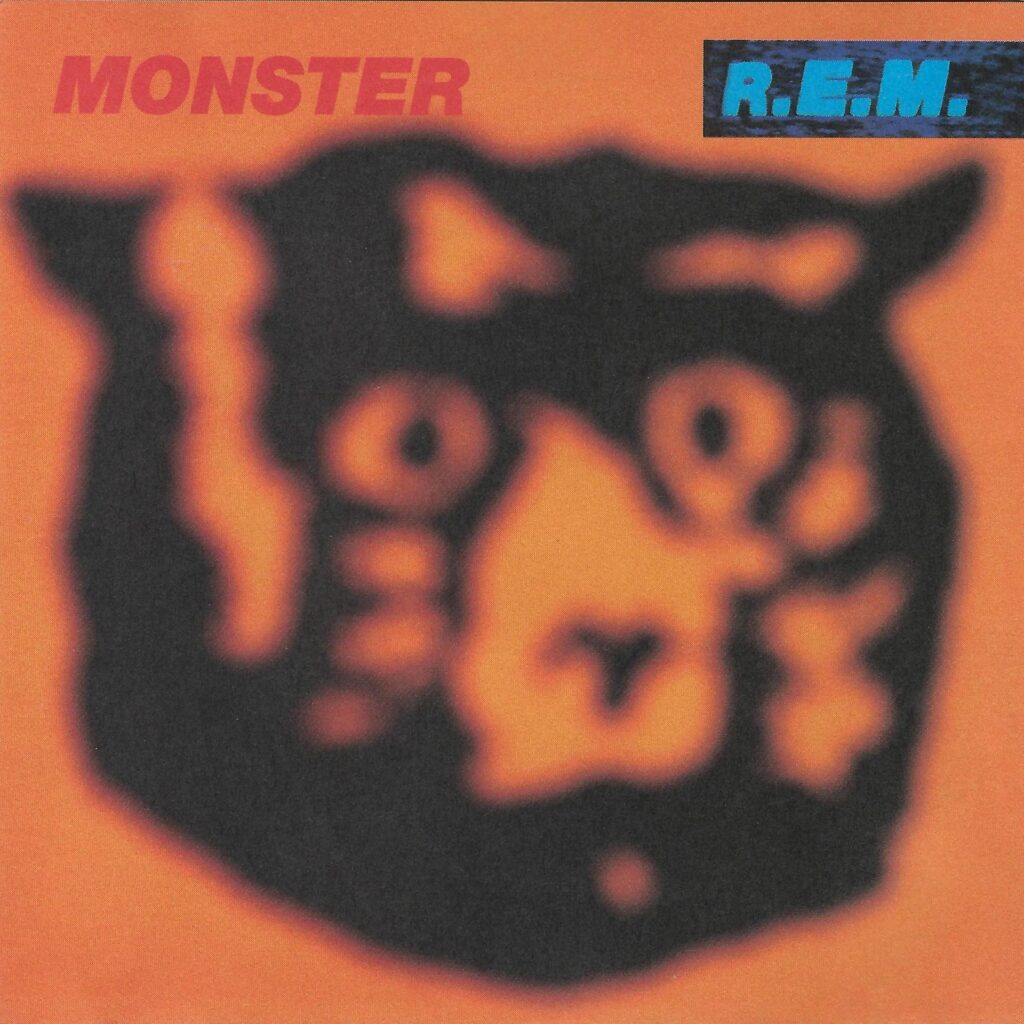
Monster
1994
(8.3)
13
Heralded as a much-welcome “return to rock” in the wake of the folkier Out of Time and Automatic for the People, Monster was haphazardly lumped into a grunge scene that was already in significant decline by the time of its autumn 1994 release. It would’ve been far more accurate to characterize Monster as a glam record, but the rock press is loath to shy away from an easy narrative. While it was reasonable to dismiss Monster as the band’s least impressive release to date, doing so runs the risk of missing out on the many attributes that it brings to the table — some that are completely unique to this record, as far as R.E.M.’s catalog is concerned.
If nothing else, despite the presence of some heavy themes, Monster is arguably the most playful record that the band ever released. Peter Buck seems to revel in the whole-hearted reintroduction of the electric guitar to his repertoire. Whether in the heavy tremolo effect that characterizes the chorus of the wonderful lead single “What’s the Frequency, Kenneth?,” the fuzzy dive bombs on “King of Comedy,” or the smoldering wasteland that is “Circus Envy,” Buck is truly in his element throughout.
Even better though is Michael Stipe, who takes the facade of Monster‘s stylistic affectation as an opportunity to take on a variety of personas over the course of these dozen tracks. Themes of identity had always been a part of his songwriting toolbox, but behind the album’s divisively ‘fussy’ mix, he seems liberated to take more risks than ever before: most notably in “King of Comedy”‘s almost inaudible proclamation, “I’m straight, I’m queer, I’m bi” — the closest yet that Stipe had come on record to acknowledging his sexuality.
One for the playlist: Despite its general placement within in the lower half of the band’s catalog, Monster has surprisingly few songs eligible for this exercise. Half of the album’s twelve tracks were released as singles. Of those that weren’t, the aforementioned “Circus Envy” does the best job of demonstrating what makes Monster such a singular release in the band’s discography.
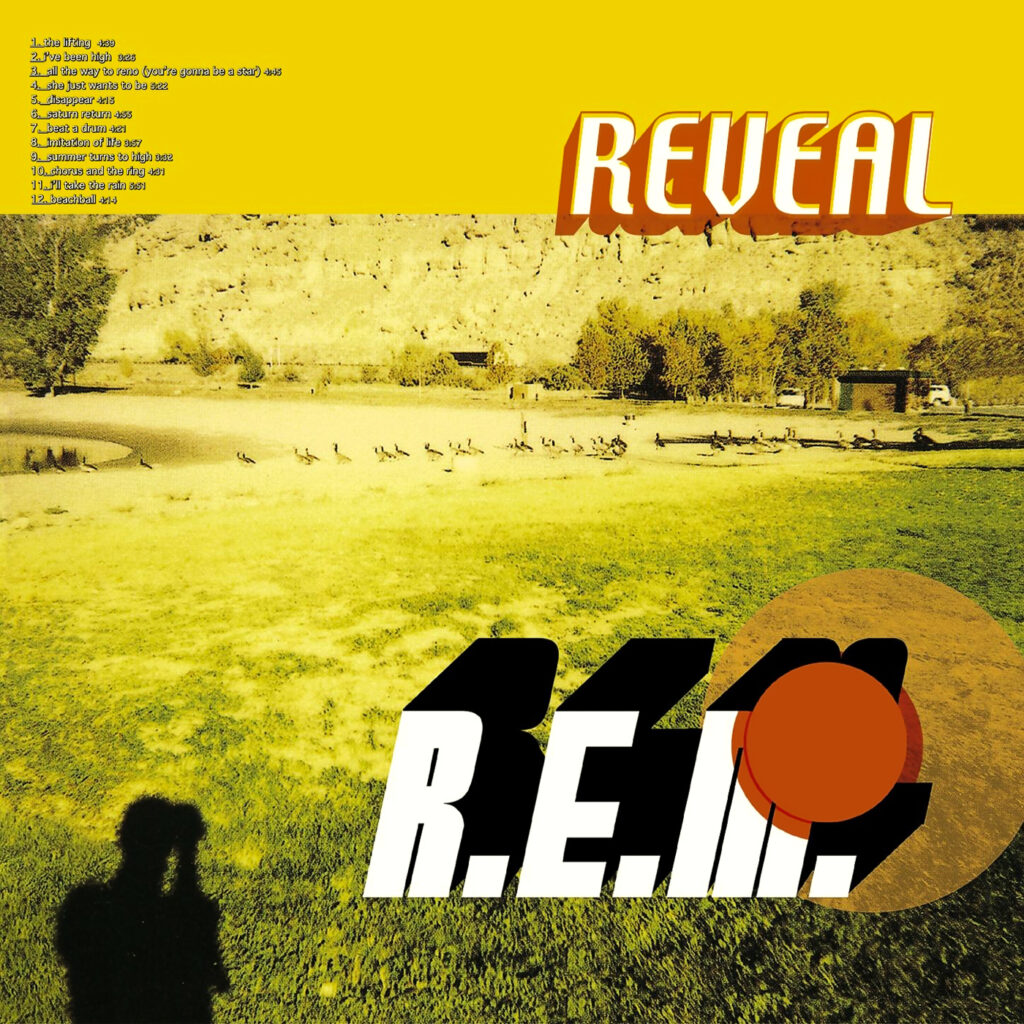
Reveal
2001
(8.4)
12
Here’s one that is bound to ruffle some feathers — not so much in its placement, but in that rating above. While there is apparently a growing contingent of R.E.M. fans that have come around to Reveal over the past couple of decades, it remains a divisive record. Even as someone who has always appreciated it more than the average fan, I probably would’ve balked at that ‘8.4’ as recently as a couple of years ago. However, while I hardly see them as equals — more on that later — I’ve always considered Up and Reveal to have a highly complementary relationship. Whereas the former largely trades in decidedly colder tones and themes, there’s an abundantly lush, summery vibe to Reveal: one that positively beams from its best tracks.
And what of those ‘best’ tracks? Well, there are a lot of them. For starters, “Imitation of Life” is an all-timer (with a fantastic video to boot). “The Lifting” is an appropriately-named introduction to the album’s mix of inviting melodies and rich production. “All the Way to Reno” is a charming blast of Spaghetti Western kitsch. “I’ve Been High,” “Beat a Drum,” and “Beachball” are all gorgeous.
The most credible critique of Reveal — at least from my vantage point — is that it’s often very ‘busy’ sounding. Admittedly, the electronic glitches and flourishes might be a bit much for some, and they’re not worn quite as well as on Up. But these songs are excellent, and occasionally even better than that. It’s not an immediate album — and I would never suggest that it’s a perfect one — but there is a lot of value hiding just below the surface of Reveal.
One for the playlist: “Imitation of Life” has rightfully been featured on both of the relevant compilations for this era, and “All the Way to Reno” is on In Time. “I’ll Take the Rain” was issued as a single, and “The Lifting” and “Beachball” were at least issued as promos. Of what’s left, “I’ve Been High” is a nice summation of Reveal‘s lush, surreal, electronically-enhanced vibe.
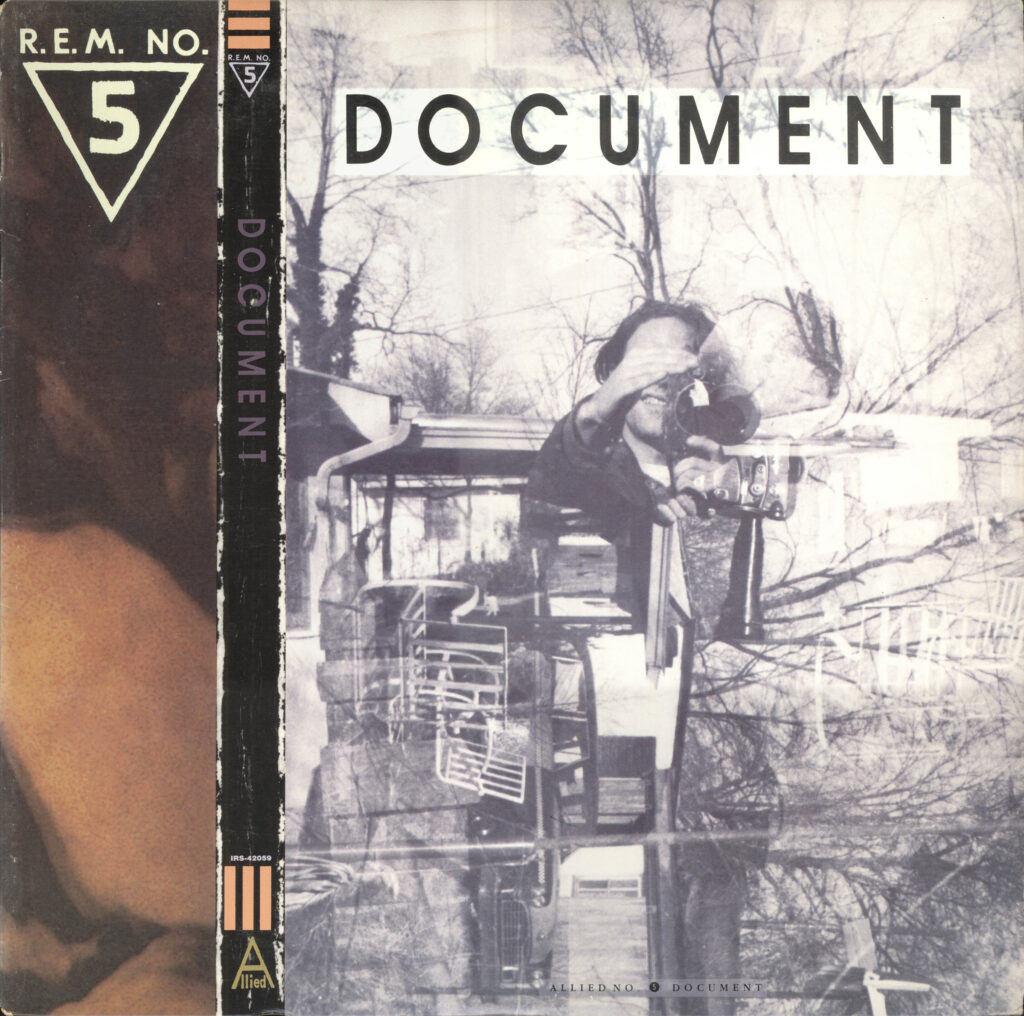
Document
1987
(8.8)
11
An I.R.S. era album outside of the top ten? Don’t say I didn’t warn you.
Document is a fine album — look at the score up there — but it is an anomaly for R.E.M.’s I.R.S. years, in that it doesn’t really break much new ground for the band. Rather, Document sounds like something of a victory lap following the previous year’s Lifes Rich Pageant: a holding pattern after having ascended to the absolute upper echelon of the indie world.
And when Document is on, it’s absolutely phenomenal. The band deservedly scored legitimate hits with “The One I Love” and “It’s the End of the World as We Know It (And I Feel Fine).” Elsewhere, “Welcome to the Occupation” and “Disturbance at the Heron House” stand among R.E.M.’s great album cuts. However, the band’s penchant for eclecticism doesn’t yield as big of dividends on tracks like “Lightnin’ Hopkins,” or their cover of Wire’s Pink Flag classic, “Strange.”
Granted, this is still an excellent record — again, look at the score rather than the ranking — but compared to the dizzying heights of their previous four albums, and the wild success that was soon to come, Document sounds wholly content to nestle in a comfortable middle ground. And for my money, R.E.M. were always at their best when they were at their most restless.
One for the playlist: Kudos to whomever it was who advocated for “Welcome to the Occupation” on And I Feel Fine — a nice recognition for one of R.E.M.’s best tracks. Of those that remain eligible, “Exhuming McCarthy” is my choice: not only for its takedown of one of the worst monsters in American history, but for its buoyantly jubilant energy and hooks.
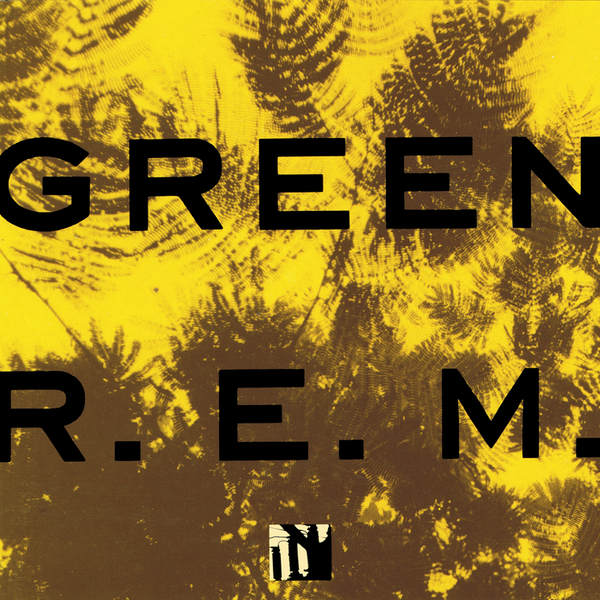
Green
1988
(8.9)
10
Edging out Document by the slimmest of margins is its major label kindred spirit. I vacillated in my placements of these two records, but Green ultimately won out due it is more varied sonic palette. Obviously R.E.M. would dive deeper into their folkier impulses on the next two LPs, but Green finds the band expanding their range on a trio of tracks that preview the acoustic soundscapes of Out of Time and Automatic for the People.
And ultimately, this makes for a welcome counterpart to the more traditional (for R.E.M) moments on Green. A contemplative track like “Hairshirt” gains resonance when following the vaguely-threatening rock-ism of “Turn You Inside-Out.” There are several of these juxtapositions throughout, as well as wholly effective midpoints, like the stately ballad “World Leader Pretend.” Document has the indie era cache — and arguably boasts the higher peaks — but for my money, Green is a more satisfying front-to-back listen.
One for the playlist: This was, by far, the easiest playlist decision. Even if “Orange Crush,” “Stand,” “Pop Song 89,” “Get Up,” and “Turn You Inside-Out” were eligible — all were singles, and four of the five were on compilations — my favorite Green track was still there for the picking. Evocative, atmospheric, and absolutely fucking gorgeous, “You Are the Everything” is one of R.E.M.’s finest songs. Despite its seemingly ultra-specific details, the lyrics almost perfectly describe some of my most treasured teenaged moments: laying across the backseat of a moving car, completely engrossed by the sound in my headphones.
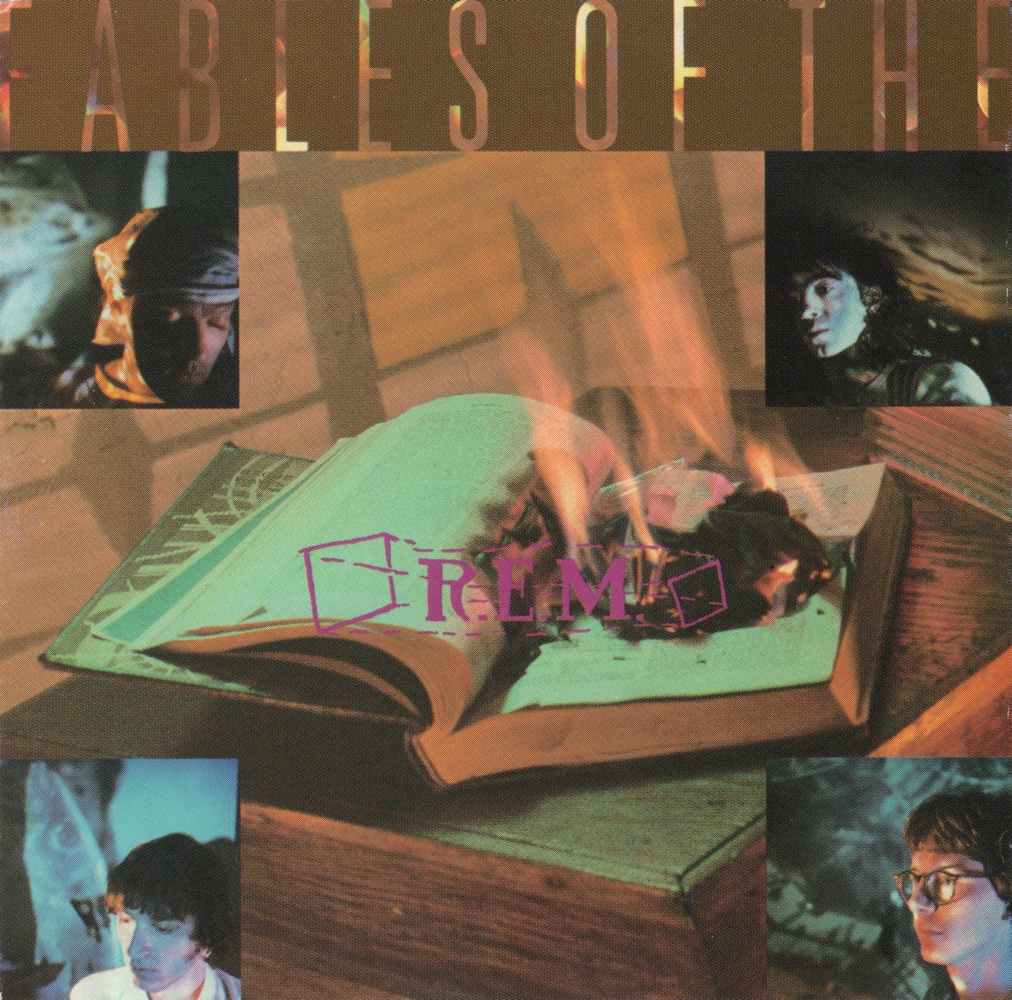
Fables of the Reconstruction
1985
(8.9)
9
The dark centerpiece of R.E.M.’s five-album run on I.R.S., Fables of the Reconstruction (or is it Reconstruction of the Fables?) was the product of a tumultuous recording session in London, helmed by Joe Boyd: one-time producer for Nick Drake and Fairport Convention.
Boyd’s folk credentials certainly reveal themselves on these eleven tracks. So too does the harshness of a cold English winter. With most of these songs having been written during the band’s cross-American travails in support of Murmur and Reckoning, there is a decidedly homesick feel that runs throughout Fables. Beyond its plenty-evocative title, these are pieces written about the group’s native South: its history, its social complexities, and its eccentric cast of characters.
Naturally, the darker elements of Fables — not to mention the oft-cited murkiness of its production — made the album something of a ‘grower’ among R.E.M.’s fan base. While far from the group’s most immediate work, it’s a deeply nuanced and layered record: one that takes several listens, and perhaps even several years, to reveal its inherent complexity and beauty.
One for the playlist: There are plenty who would argue that “Driver 8” is the definitive R.E.M. song — and I wouldn’t argue too hard against them — but it is of course ineligible. So too is “Life and How to Live It,” which I suspect was always a dark horse fan favorite, and which also earned some belated appreciation with its inclusion on both And I Feel Fine and Part Lies. While it may come off as a minor track when compared to those, “Green Grow the Rushes” is arguably the song that best captures the uniquely pastoral beauty of Fables.
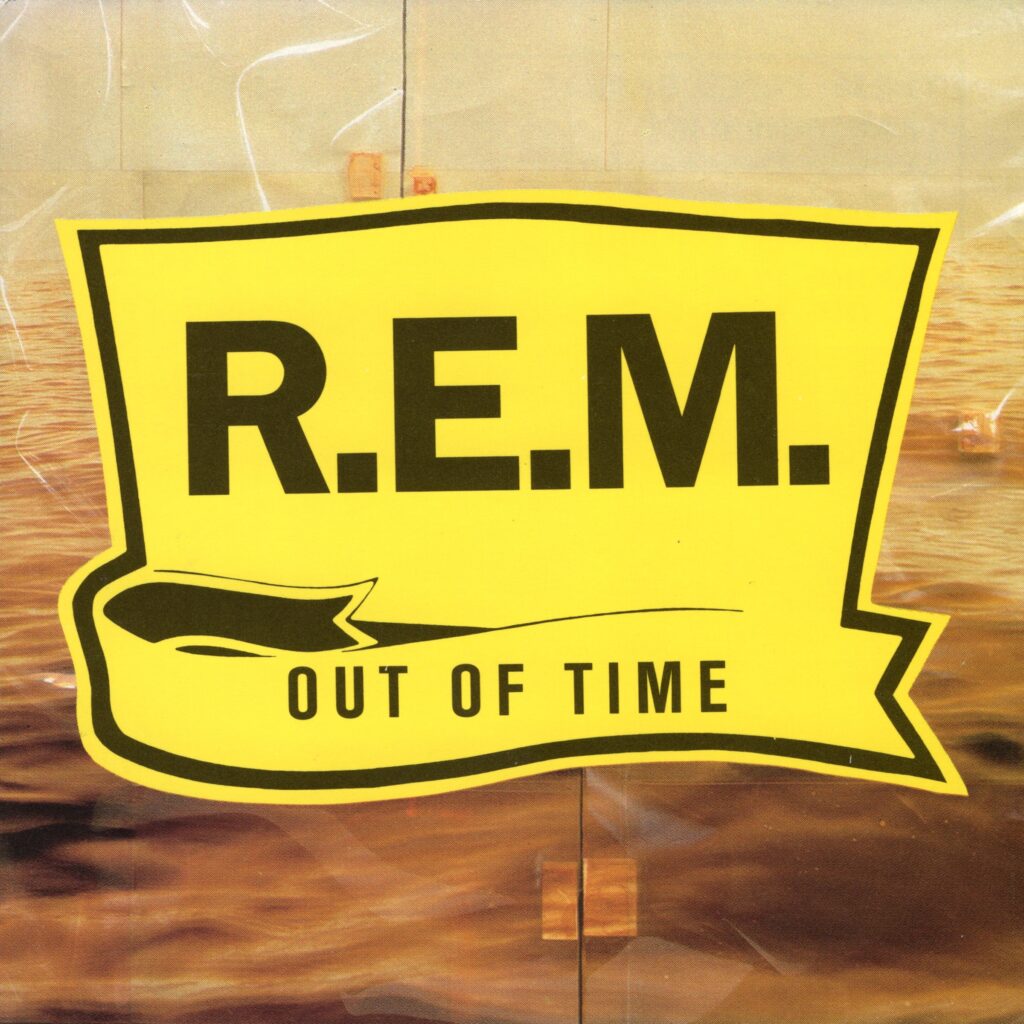
Out of Time
1991
(9.0)
8
R.E.M. had undoubtedly flirted with stardom prior to Out of Time, but the 1991 record is the one that finally ushered the group into the mainstream. Buoyed by its iconic lead single (“Losing My Religion”), a second genuine hit (“Shiny Happy People”), and an armload of Grammy awards, Out of Time established R.E.M. as one of the biggest bands of their era, en route to selling over eighteen million copies around the globe.
And honestly, you’d be hard-pressed to find a more eclectic chart-topping record than this one. The album’s four singles alone represent mandolin-driven folk, a sunshine pop singalong, a Beach Boys-inspired confection sung by Mike Mills, and a hip-hop/funk mashup featuring KRS-1. Elsewhere, Out of Time takes on baroque affectations, acoustic dirges, and the band’s classic open-chord jangle pop. While one might assume that it would all come across as a self-indulgent mess — and despite the cries of long-time fans who insisted that R.E.M. had “sold out” — Out of Time is cohesive, compelling, and lovely throughout.
One for the playlist: Despite its position as R.E.M.’s big breakthrough, there are a number of excellent Out of Time contenders that were either never released as singles, or didn’t make it onto the relevant compilations. Of those, ‘Half a World Away” stands out as an underrated highlight. Its harpsichord-dominated arrangement establishes the track as one of the band’s best dalliances with baroque pop, and Stipe’s vocal melody is charming to the max.
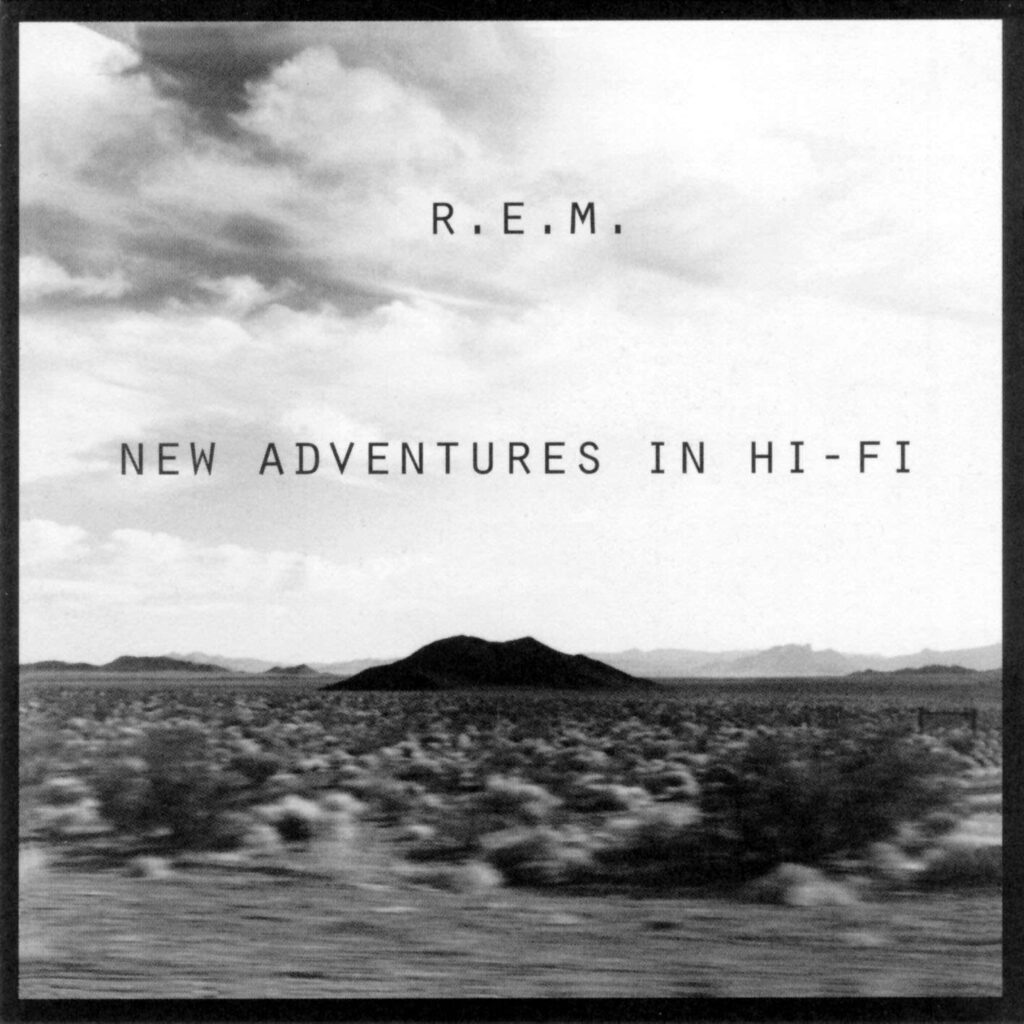
New Adventures in Hi-Fi
1996
(9.2)
7
R.E.M.’s final album with Bill Berry is an underrated classic. Largely recorded during rehearsals and sound checks on the tumultuous Monster tour, New Adventures in Hi-Fi benefits greatly from its comparatively off-the-cuff quality. And given its musically sprawling nature, Americana themes, and road-weary imagery, New Adventures has rightfully earned a place in the canon of great road trip albums.
Highlights are both plentiful and bound to vary from listener to listener. I’ve always been quite taken by the trio of singles: “E-Bow the Letter,” “New Test Leper,” and “Electrolite.” The former’s drone — provided by the titular guitar accessory — and Patti Smith vocal appearance make it one of the most haunting songs in R.E.M.’s discography, even before you learn of its genesis as a “letter never sent” to River Phoenix. The latter tracks are two of the band’s most melodic, and simultaneously rank amongst Stipe’s most poetic work.
One for the playlist: A true fan favorite, “Leave” is one of the great non-singles in R.E.M.s catalog. The out-of-character ‘fire alarm’ hook alone makes it noteworthy, but beyond that attention-grabbing element, it’s a late-era classic from the band’s original lineup.
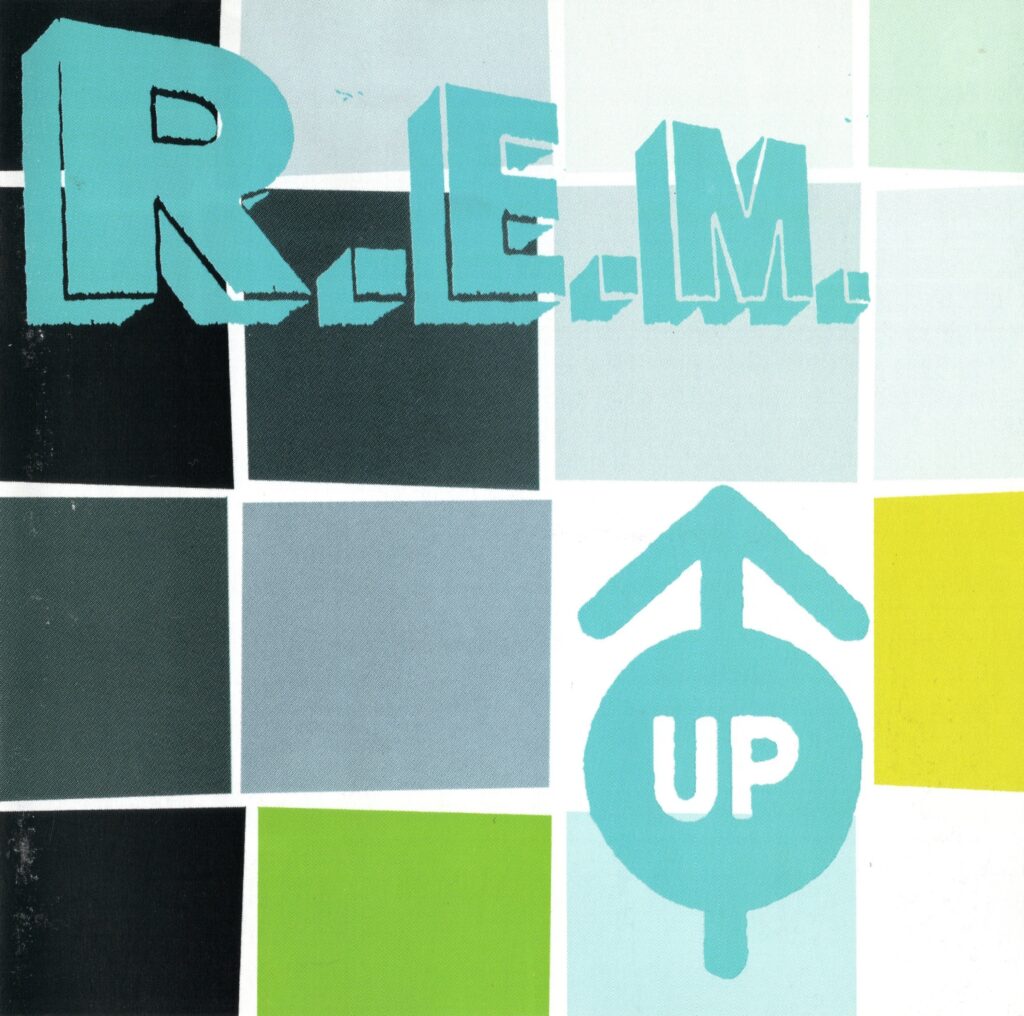
Up
1998
(9.3)
6
I have a confession to make: this entire website was started as a ploy. My intention was to spend a few years building up credibility and a loyal readership, and then, on the occasion of the 25th anniversary of R.E.M.’s eleventh album, I would — from a position of at least some authority — claim it to be the band’s secret masterpiece.
Okay, literally none of that is true, other than my assertion that Up may in fact be R.E.M.’s secret masterpiece. This isn’t a hot take. I’ve been an ardent backer of this album for nearly a quarter-century now, and time has only made it grow in my estimation. Of every album, ever recorded by any band or artist of even mild repute, this may very well be the one that I would argue is most overdue for a critical reappraisal.
But the thing is, plenty of critics praised Up when it arrived in the fall of 1998. It’s just that the album lacked any kind of commercial staying power, and was summarily dismissed by a number of fans and dissenting critics as the work of a band well past their prime: and now, minus an original member.
Now, it’s not too difficult to see why Up got the short shrift. It’s arguably the darkest album in the band’s catalog — even more so than Fables of the Reconstruction or Automatic for the People. It’s also a pretty radical sonic departure from the back-to-basics populism of New Adventures in Hi-Fi: itself not exactly celebrated upon release, rather than damned with faint praise. Up undoubtedly bears the scars of its labored creation. It’s also probably a bit too long. And, perhaps most importantly, it arrived on the heels of game-changing records from a generation of artists that R.E.M. themselves had paved the way for: Homogenic, If You’re Feeling Sinister, and of course, OK Computer.
But this album is so damn rich. For starters, it may be Michael Stipe’s single best work as both a singer and lyricist. There’s a directness and vulnerability to both his writing and performances that is little short of arresting. It’s weary and wounded, but it’s also “hope despite the times.” Then there’s Peter Buck and Mike Mills, who take the departure of one of the band’s critical limbs as an opportunity to reinvent their sound once again — all in the face of a rapidly changing musical landscape. They do so with a grace and nuance that is striking, if not exactly immediately revealing. Admittedly, these songs need to be lived with to be truly appreciated, but if you ever take my word here for anything, make it this.
One for the playlist: There are plenty of excellent eligible tracks to pick from, but the late-album highlight “Parakeet” is Up‘s other great Beach Boys homage – after the spectacular third single, “At My Most Beautiful.” The aquatic piano alone makes “Parakeet” an intriguing track, but the dense arrangement — and Stipe’s evocative lyrics — seal the deal.
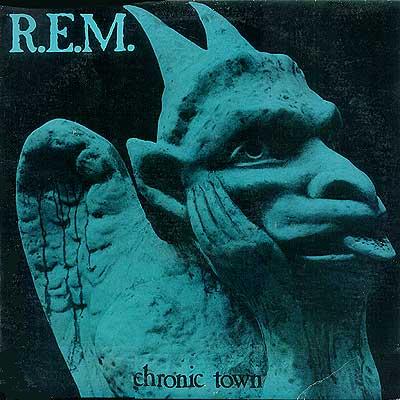
Chronic Town [EP]
1982
(9.5)
5
Five songs: all perfect. But even more impressive than the song craft found on R.E.M.’s debut EP is the fact that their utterly original musical vision appeared fully intact from the outset. Okay, technically they had already debuted in 1981 with the “Radio Free Europe” / “Sitting Still” single — which is also perfect — but there’s a totality to Chronic Town that is still arresting over four decades after its arrival.
This music is murky, yet crystal clear. It’s inscrutable, but it conveys universal emotions. It’s immediately familiar, and also wholly refreshing. Alongside the landmark album that would follow eight months later, Chronic Town provided an entirely new template for the American indie rock scene. Though countless acts would copy it, none would approach its mysterious elegance. Not even close.
One for the playlist: Aside from the regular inclusion of “Gardening at Night” on the relevant compilations, Chronic Town has generally received the short shrift. Seeing as how I’m arranging this playlist chronologically, it makes sense to tab the opening “Wolves, Lower” — though “Carnival of Sorts (Boxcars)” also stands out as one of R.E.M.’s great early tracks.
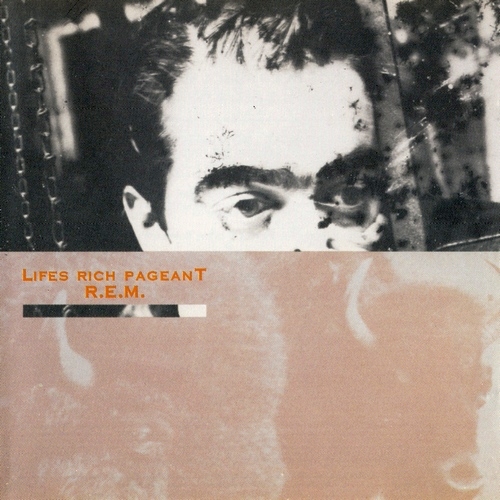
Lifes Rich Pageant
1986
(9.6)
4
In many ways, Lifes Rich Pageant represents the platonic ideal of an R.E.M. album. It rocks, but it also ‘folks.’ It sings its words clearly, but allows plenty of room for imagination to fill in the blanks. It plays to the cheap seats, while still doing so from the idyllic platform of an indie label. And holy goddamn, what a set of songs on this one. The track listing reads like a ‘best of’ compilation from a great band, but it was merely another waypoint in a dizzying six-albums-in-six-years span.
Following the downcast Fables of the Reconstruction, R.E.M. seemed particularly keen on making their most bombastic record yet; but while bombast in most band’s hands is, well… bombast, for this band, grandiosity was an opportunity to add some much-welcome heft to their highly-nuanced aesthetic. Sharply helmed by the production of Don Gehman, Pageant is an unqualified triumph.
One for the playlist: Pageant is well represented by R.E.M.’s compilations — especially And I Feel Fine, which includes excellent non-singles, like “These Days,” “I Believe,” and a personal favorite, “Cuyahoga.” Of what remains, “Just a Touch” feels like the right pick. As one of the band’s most rollicking tracks from the I.R.S. era, it’ll inject a bit of energy.
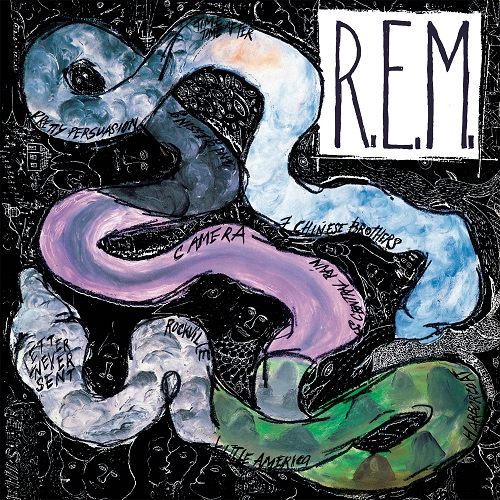
Reckoning
1984
(9.7)
3
Released almost exactly one year after Murmur, Reckoning saw R.E.M. accomplishing the rare feat of following up one masterpiece with another. What’s nearly as impressive is that Reckoning was a significant departure from its predecessor. But while the band had developed a newfound musical muscularity — forged in part by a whirlwind touring schedule in support of Murmur — the song craft remains front and center.
Granted, R.E.M. — and Stipe’s vocals in particular — were still far from ‘direct,’ but there is both a conventionality and urgency to Reckoning that keep it sounding vital nearly forty years later. There’s also some truly notable range on display as well: from the post-punk heft of “Harborcoat,” to the mournfully plaintive “Camera,” to the countrified standout “(Don’t Go Back To) Rockville.” On the latter track, Stipe implores the song’s intended recipient not to “waste another year.” It’s abundantly clear that the band heeded their own advice on this remarkable follow-up to their landmark breakthrough.
One for the playlist: It’s a little hard to believe that a track as stellar as “Harborcoat” is right there for the picking, but somehow it is. Despite a number of excellent options, this one is a no-brainer.

Automatic for the People
1992
(10.0)
2
If Out of Time was the setup, Automatic for the People was the knockout punch that confirmed R.E.M.’s status as a commercial juggernaut. Matching its predecessor’s movement of eighteen million copies, Automatic spawned three massive hit singles (“Drive,” “Man on the Moon,” and “Everybody Hurts”) and was nominated for the Grammy Awards’ most prestigious prize: Album of the Year.
But who gives a fuck about sales, hits, and Grammys? After all, Automatic ultimately lost in its category to the omnipresent and insufferable soundtrack to The Bodyguard. What matters — then, and certainly now — is that Automatic for the People is a masterpiece: and, remarkably, one that barely holds any resemblance to the group’s first masterpiece.
For over thirty years now, critics have described Automatic as grim, morose, and a rumination on mortality — generally in the service of effusive praise for the record. While at least some of these takes were fueled by false rumors of Michael Stipe’s failing health — particularly rampant and reckless speculation that he was dying of AIDS — there is a genuine and pervasive sense of melancholy that haunts nearly every dusty corner of this album.
But there are also moments of crystalline joy, triumph in the face of tragedy, and unremitting beauty. All of these qualities — as well as the sorrowful ones — are synthesized in the album’s final three-song arc: perhaps the finest closing trio on any album. If “Man on the Moon,” “Nightswimming,” and “Find the River” are incapable of moving you, you’re doing this whole ‘music thing’ wrong.
One for the playlist: Between singles — there were six of them — and compilation tracks, it would seem as if there wasn’t a lot left to choose from on Automatic for the People. And yet, “Try Not to Breathe” — one of R.E.M.’s most beautiful and poignant tracks — is just sitting there, begging for me to take it.
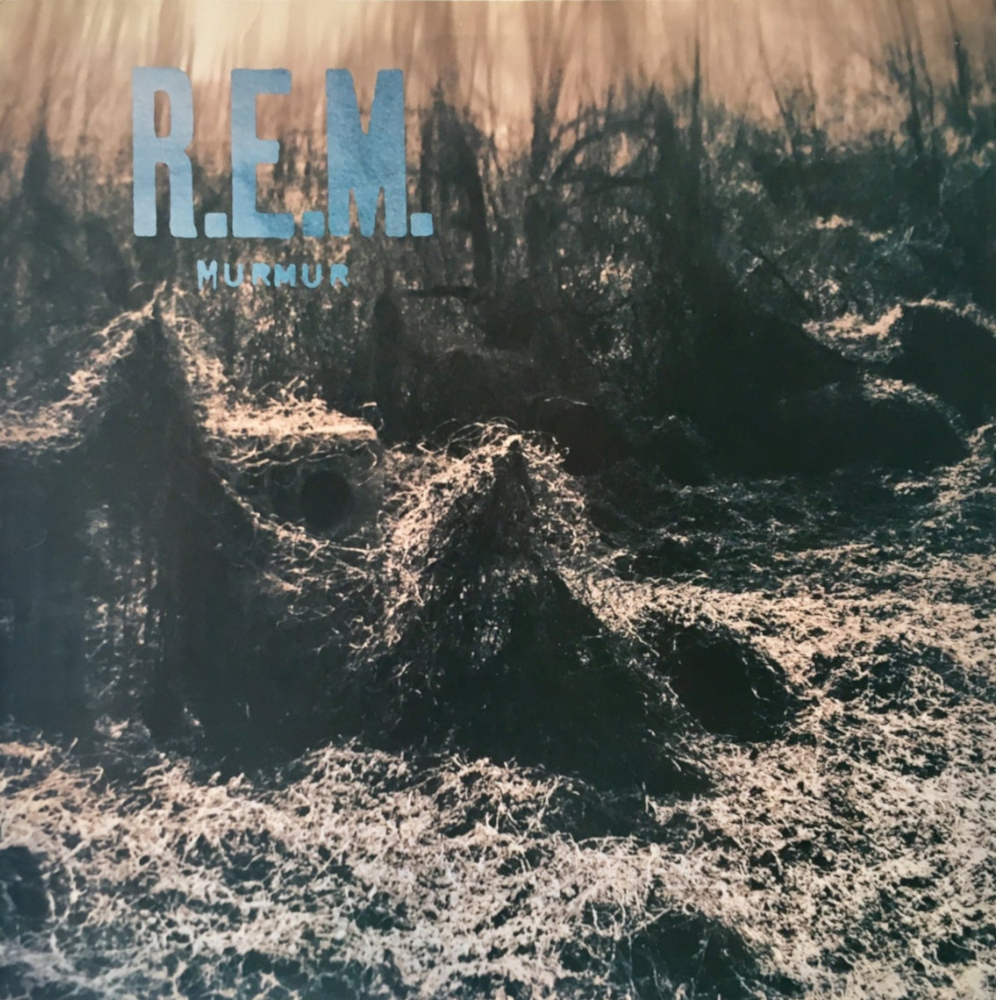
Murmur
1983
(10.0)
1
But for all of its eloquence and elegance, Automatic for the People still plays the part of runner-up to the archetype. Released in the spring of 1983, at what could — in hindsight — be viewed as a critical moment for the independent American rock scene, Murmur is the classic amongst classics.
Not even intimate familiarity with Chronic Town could have quite prepared listeners for Murmur. Here, the duo-tonal character of that debut EP is expanded to a vibrant palette, replete with textural variance previously unheard of for an American rock album. Really. Not even The Velvet Underground and Nico, The Band, or Marquee Moon can boast a range that competes with the pastoral strains of “Talk About the Passion,” the post-punk propulsion of “9-9,” the unadulterated jangle pop of “Sitting Still,” the dreamy balladry of “Perfect Circle,” and the eerie childhood folk of “We Walk.”
And it all coheres into a perfectly unified whole: one that encompasses the disparate influences of four musical fanatics, and the distinct-but-never-heavy-handed production of Mitch Easter and Don Dixon. Murmur‘s impact was both immediately felt and long-lasting. It was both out of time, and of its time. And four decades after its kudzu-covered soundscape mysteriously entered our collective consciousness, it remains one for the ages.
One for the playlist: An album this good is bound to have a few tracks that flew under the radar the first (and second) time around. Of these, it’s “Shaking Through” — and its vaguely barrel house piano riffs — that has been a long-time personal favorite. It was a mixtape staple of my high school years, and it makes the cut as the pick from R.E.M.’s finest album.




